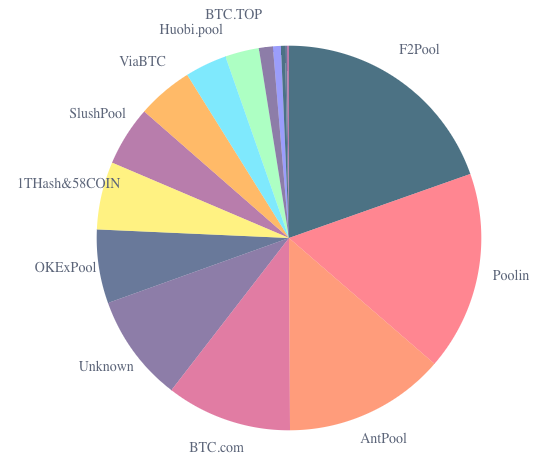On Tuesday (May 12), Alejandro De La Torre, Vice President at Poolin, which is one of largest Bitcoin mining pools, said that the Bitcoin hash rate of all mining pools had gone down since the halving event that took place on Monday (May 11).
So, what is a mining pool? Here is how a nice explanation:
"A mining pool is a joint group of cryptocurrency miners who combine their computational resources over a network.
"Individually, participants in a mining pool contribute their processing power toward the effort of finding a block.
"If the pool is successful in these efforts and is rewarded with cryptocurrency tokens as a result, the mining pool divides up these rewards to individuals who contributed according to the proportion of each individual's processing power or work relative to the whole group.
"In some cases, individual miners must show proof of work in order to receive their rewards."
In an interview with "Bitcoin Magazine NL" in September 2019, De La Torre said that that the team behind Poolin.com is the same as the team behind mining pool BTC.com.
The pie chart below from Blockchain.com shows the shows the (estimated) hashrate distribution amongst the largest Bitcoin mining pools in the past four days:

On May 2, in a blog post for Poolin, De La Torre wrote:
"There is little doubt among researchers and industry experts that the hashrate is going to drop significantly when the block subsidy gets cut in half."
As for the question of "how much hashrate will come offline", he estimated that following Bitcoin's third halving event on May 11, up to 30% of Bitcoin's hash rate could disappear due to the departure of several unprofitable miners.
On May 11 (Bitcoin Halving Day), De La Torre told Cointelegraph:
"Mining farm personnel are shutting [their units] off as we speak since they will not want to do it after the halving — because then they're losing money."
Yesterday, he provided an update (based on data from his company's blockchain explorer tool "Blockin") on how the hash rate controlled by various Bitcoin mining pools had decreased since the halving, and suggested that the 50% reduction in the Bitcoin block mining reward may have caused some miners to (partly) switch to Bitcoin Cash (BCH) or Bitcoin SV (BSV):
all #bitcoin pools have had a decrease in hashrate since the halving: pic.twitter.com/3MALTrdhje
— Alejandro 'bitcoin halved' De La Torre (@bitentrepreneur) May 12, 2020
keep in mind most bitcoin data/analytics sites give an average of 3 days or longer for total hashrate. looking at the decrease of pools hashrate (above pic from https://t.co/INfvjE5VHk) can give a better understanding of what is going on with the hashrate
— Alejandro 'bitcoin halved' De La Torre (@bitentrepreneur) May 12, 2020
bch and bsv have seen 100%+ increase in their total hashrate suggesting some miners switched to these chains
— Alejandro 'bitcoin halved' De La Torre (@bitentrepreneur) May 12, 2020
 cryptoglobe.com
cryptoglobe.com